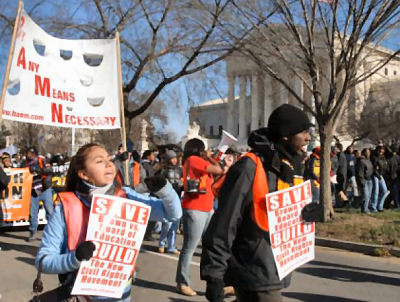While the minorities of America are bereft of equality and equity, many progressive groups fight for their right to equal opportunities.
The opportunity disparity between minorities and the affluent white majority in America is shockingly large. Historically, student’s achievements throughout the U.S. heavily depend upon their racial and socioeconomic background. However, the word “achievements” does not accurately represent how black and hispanic students simply don’t receive the same opportunities as white students. Black and hispanic students are graduating and earning degrees at a significantly lower rate than white students in America. According to the ACLU, workers of color are still concentrated in lower paying unskilled jobs.
“I think the opportunity gap in America is definitely prevalent, and is the reason why the majority of leaders in business and politics are white. Individuals growing up in low income areas who already face tremendous discrimination don’t receive the same resources and opportunities as wealthy, white Americans,” said Jeff Grant, and Economics major and the University of California Berkeley. “It’s a sad reality,”
Affirmative action is the policy that provides special support to members of groups who were oppressed throughout history by giving them education and employment opportunities.
“Affirmative action is the reason why my goddaughter went to college. As a female Moroccan immigrant living in Colorado, she was among a lot of high achieving white people,” said Francoise Williams, a mother of two living in Woodside, California. “She applied to Harvard and wrote about her struggles as a minority in America, and I think they paid closer attention to her because of her background.”
In Executive order 10925, John F. Kennedy stated that “take affirmative action to ensure that applicants are employed, and that employees are treated during employment, without regard to their race, creed, color, or national origin”. However, after over half a century, the affirmative action has done little to help aid the disparity.
“I still get discriminated against in the classroom, and feel like some teachers assume I don’t have money or don’t know anything because I am hispanic,” said Maria Ramirez, a student at a high school in San Ramon, California.
“Teachers get surprised when they see my work and effort because I don’t look like every other high achieving student in the Bay Area. I know things are better than they were fifty years ago, but we still have a long way to go until there’s overall equity in America.”









